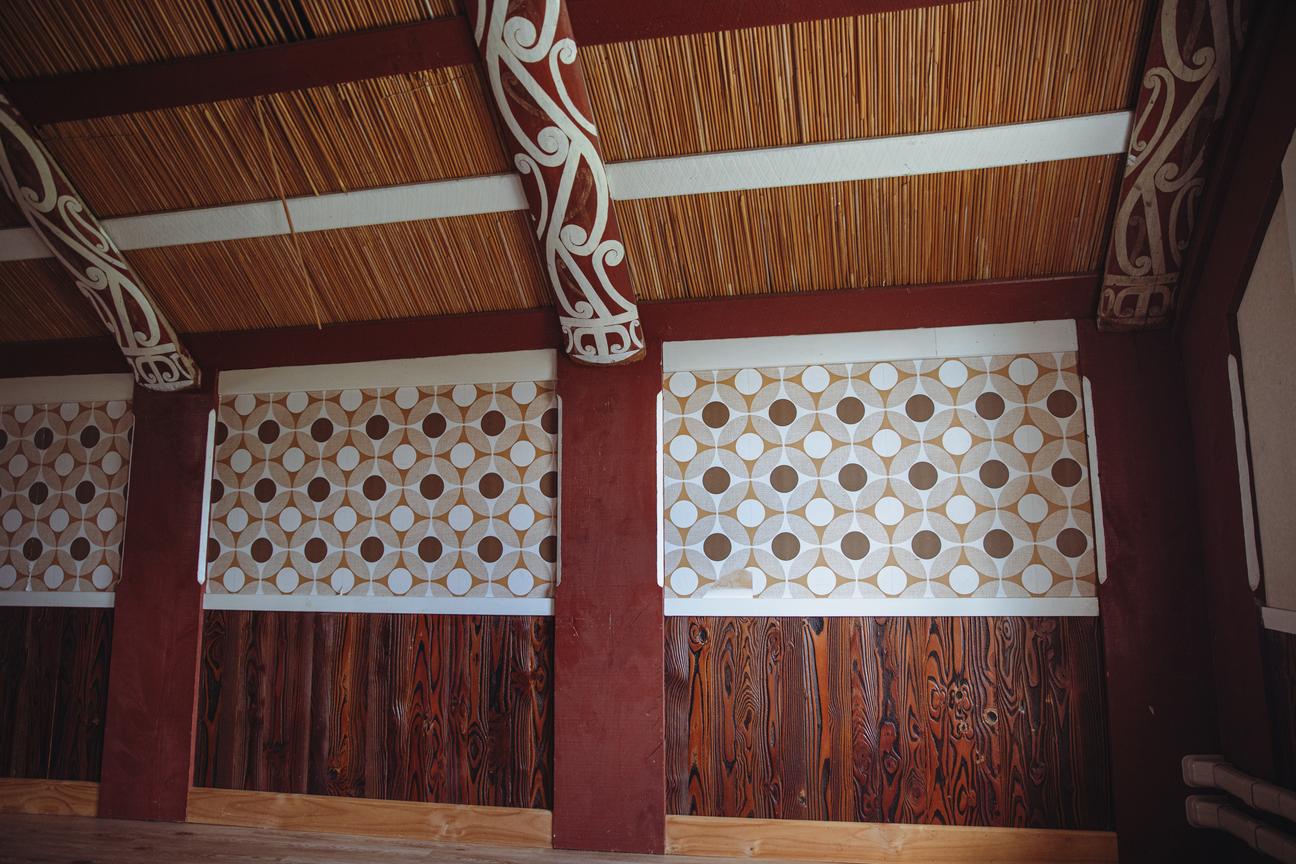09 January 2025

Cultural heritage is more than objects or art - it’s the layered history, stories, and connections that define who we are and how we relate to the world.
These layers shape our identity.
The wharenui (ancestral meeting house) is the perfect embodiment of this philosophy, both as an example of cultural heritage and a basis to remind us of the ngako (the substance) of what is important.
Penapena Taonga is committed to preserving and enhancing cultural heritage that gives space to meaningful innovation.
The article below explores the notion of resourceful innovation that matters, and highlights the Māhinaarangi wharenui at Kererū marae, a space deeply tied to Penapena Taonga founder, Kararaina Te Ira.
The heke (rafters), painted in kōwhaiwhai by successive generations, tell a story of community, resilience, and connection. These layers capture the essence of cultural heritage and exemplify how each generation has added their own contribution over the years. These contributions are reflective of each generational era grounded in their shared whakapapa (genealogy).
On the walls, traditional carvings are replaced by wallpaper, a humble yet remarkable expression of resourcefulness and creativity. This wallpaper, introduced by my koroua (grandfather), Hetta Teira, reflects a moment in time when the whānau (family) combined innovation with cultural values to complete their wharenui. At that time our marae wasn’t one of the most well off in Raukawa ki te Tonga. Although our whānau was numerous, everything was mostly done by a literal helping hands approach where relatives with certain skills combined their energy and resources to establish Māhinaarangi after several years of the old whare being put to rest.
Much of the parts of the whare were either sourced through limited marae budgets from fundraising efforts or through gifted run off resources from various whānau members’ construction day jobs. Our marae, particularly the wharenui and ablution block, did have a series of interesting features. Regardless everything was done and contributed to with aroha (love) and brute collective effort.
The wallpaper was sourced from my koroua, who had a small painting and decorating business. The wallpaper would have been groovy for its time and over the years has had varying degrees of responses from manuhiri (guests) over the years. It was always a feature that our whānau either liked or disliked. When I first saw the wallpaper I can’t say I was the biggest fan. In fact, I remember having a prejudice towards it that was influenced by my Te Arawa upbringing. However my father graciously taught me that although it wasn’t the flash carvings that I was familiar with in the Bay of Plenty, its story and what it represented meant just as much as a carving.
Even though much of our whānau descended from Raukawa carvers, access to resources like appropriate wood and the time to carve was an unattainable luxury for our marae at that time. With that in mind my koroua was charged with painting and decorating the wharenui. When it came to the wallpaper it could be perceived as a random discount selection from décor trends at that time. But in fact, it was picked based on its similar qualities to the carvings, particularly the exaggerated eyes, produced by his whāngai koroua, Hokowhitu McGregor. Hokowhitu was known as a master carver and one of the few to carry on Raukawa carving traditions, sometimes referred to as the Raukawa Carving School Traditions.
Hokowhitu was mentored and worked alongside master carver Te Motu Heta who is largely attributed with continuing and teaching Raukawa carving traditions. Because of this close connection to Te Motu Heta, my koroua Hetta was named after him although possessing an additional letter T in his name. Te Motu Heta and other Raukawa carvers also serviced the Kīngitanga. In fact the Kīngitanga coat of arms, Te Paki o Matariki, was developed by the Raukawa Carving School and collective.
It is evident that this rich history and whānau connection influenced my koroua, and his design approach regardless of what was available reflected the influence of his koroua on his craft and resourcefulness. The wallpaper continues to endure in Māhinaarangi reflecting that cultural expression and the layering of storytelling is a human experience for all to partake. This particular example is integral to informing mine and Penapena Taonga’s direction when creating inspiring and people centric approaches.
Image: The interior of Māhinaarangi wharenui - where tradition and innovation meet to honour the past and inspire the future.
Photographer: Te Māreikura Whakataka-Brightwell